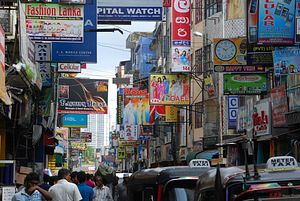When Indian Prime Minister Narendra Modi meets with President Donald Trump next week, increased U.S. restrictions on skilled immigrants visas will likely come up. However, the real migrant challenge — and opportunity — facing India comes from within its own borders. India’s internal migrant population has grown substantially in recent years, spurred by individuals moving from the country’s struggling north to the wealthier west and south. Central and state governments respond by either overlooking this trend, or trying to prevent it. Instead, they should understand how internal migration could vitally impact India’s economic trajectory, and that easing the transition for the millions who have already made the journey is the smart choice for India’s future.
This is not a small issue. According to India’s most recent economic survey, the rate of interstate migration between 2001 and 2011 doubled compared to the previous decade, growing at 4.5 percent annually. To put these numbers into perspective, annual interstate migration in India averaged about 5 to 6 million migrants a year, or over twice the 2.4 million immigrants received by the European Union during the height of the 2015 Syria refugee crisis.
Staggering economic inequities among India’s states drive these migration flows. The northern state of Bihar, one of the centers of emigration, has a per capita income roughly equivalent to Somalia (around $520) with a birth rate of 3.4 children per woman. The southern state of Kerala, one of the main destinations, boasts a per capita income over quadruple Bihar’s (around $2,350) with a birth rate (1.6 children per woman) on par with Denmark.
These contrasts exemplify a core paradox in India’s development: the population is growing fastest in the north, while the money remains in the west and south. As noted by Ambit Capital, a well-known Indian finance house, the combination of a youth bulge, a poor gender ratio, and weak economic prospects means the country’s north “runs the risk of exploding as millions of barely literate men face a lifetime without jobs and without women.” In this context, internal migration appears not only inevitable, but even welcome.
This is not to deny that migration brings its own set of challenges. Western and Southern India may look prosperous comparatively, but the streams of workers from southern states trekking to Singapore and the Persian Gulf shows that these regions need jobs too. Nor does migration untangle the web that is Indian identity politics, where politicians in cities like Mumbai trot out charged tropes of migrant hordes taking jobs from the natives.
To avoid these issues, politicians often propose development schemes in poorer regions, which they claim will prevent migration. However migration can’t be prevented in the short run, even with a concerted effort to boost growth in the country’s north. The rapid increase in emigration during the 2000s for example, occurred during a period of high growth in Bihar. Since migration itself requires costs, higher incomes only allow more people to move. Fundamentally, until the prospects at home exceed the payoff from migration, migration won’t stop.
In reality, internal migration could actually benefit India in the long term. Economic development has historically always driven people to cities of opportunity. Faster urban growth means higher incomes, better service access, and increased economic growth rates – a boost India urgently needs. While this certainly doesn’t mean that the government stop aiding weaker regions, it requires politicians to give up the idea that jobs programs will quell the “flight-not-fight desperation” pervading the poorest parts of the country. Instead, the government should recognize that better integrating migrants will allow India to reap the benefits of urban growth.
Tracking internal migrants remains the primary hurdle to successful transitions. Migrants live precariously, lacking vital identification required to access everything from food subsidies to telephone service. Often hired through middlemen for informal sector jobs like construction, they work with no official contracts and little protection from exploitation.
Some recent developments look promising. The drive to register every Indian through biometric identification, known as Aadhaar, could alleviate identification problems (though glitches remain with covering migrant workers). Meanwhile other destination-state governments could emulate states like Tamil Nadu, which last year finished a survey charting the number and characteristics of internal migrants across the state. As officials noted, this could help the state track working conditions and ensure better access to public services.
Unlocking India’s true economic potential lies in ensuring that more of its workers find opportunities internally. To achieve that, the government needs to recognize that internal migrants may play a bigger role in India’s economic future than its more celebrated emigrants abroad.
Sahana Kumar is Research Associate for South Asia at the American Enterprise Institute.

































